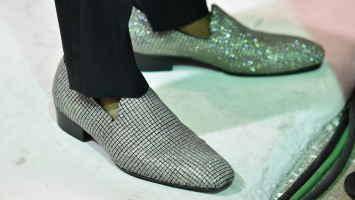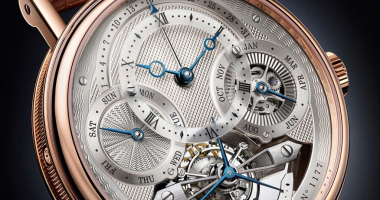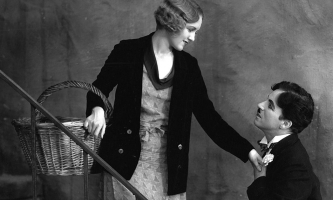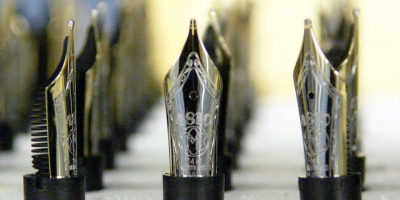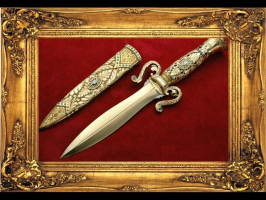Top 10 Most Expensive Rare Postage Stamps
Philately, or stamp collecting, is a hobby as old as stamps themselves. People have been collecting these small paper squares since nations began to control ... read more...and standardize the post, and the price of rare antique stamps continues to grow over time. However, due to their transient character, the majority of stamps are discarded without being thought about by the recipient. Many rare stamps are actually one-of-a-kind with the jaw-dropping price. And here are the most expensive rare postage stamps.
-
After a shipment from London was delayed, the postmaster general of British Guiana ordered a set of three varieties of stamps to be issued in 1856. British Guiana 1 Cent Magenta is the only stamp that has been discovered, the rarest stamp in the world as well as the most expensive rare postage stamp.
This is a non-serrated stamp with a black sailboat in a frame with 4 small lines, printed on red paper. There is also the Latin inscription Danmus fetinus que vicissim in the middle. Currently there is only one stamp "British Guiana 1c magenta" in the world. This stamp has been postmarked, the corners are cut off and the signature on the stamp is by a man named Dalton of Georgetown, Guyana.
In 1873, this stamp was first sold for six shillings ($1.44). The British Guiana 1 Cent Magenta sold for more than 6.4 million times its original value at a Sotheby's auction in June 2014, reaching $9.48 million. The stamp previously belonged to John E. du Pont, the heir to the du Pont fortune who murdered a man on his Foxcatcher property in 1997. (Steve Carell plays du Point in the 2014 film, "Foxcatcher"). In 1980, Du Pont paid a then-record-breaking $935,000 for it. His estate sold the stamp after he died in prison in 2010.
Price: $9.48 million
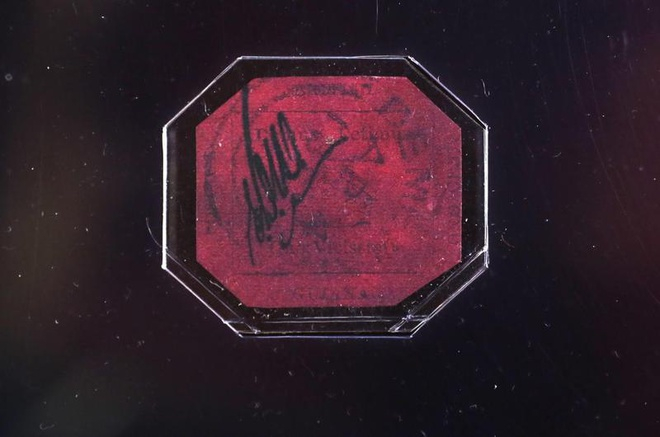
Photo: Pinterest 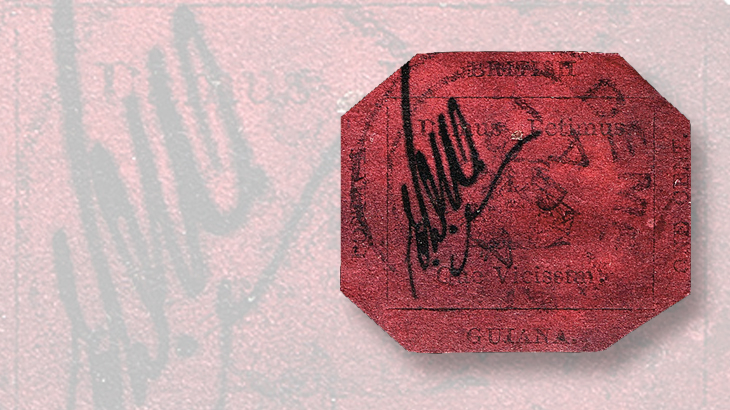
Photo: Linn's Stamp News -
The most famous stamp in Italian philatelic history is the Sicilian Error of Color, which was released in 1859. The stamp is extremely expensive because of a color misprint: it should have been printed in yellow, but the objects were manufactured in blue for unclear reasons. According to experts, only two copies of this historic stamp have survived.
In 1899, both artifacts were displayed at the Manchester Philatelic Exposition. Following that, these one-of-a-kind artifacts were separated and auctioned off as part of the famed Ferrary collection. The stamp's high worth is partly justified by its outstanding antiquity.
Despite its age, the Sicilian Error of Color has been conserved in excellent shape. This highly sought after antique stamp was auctioned off by Dreyfus in June 2011. The stamp cost 1.8 million euros to produce (approximately 2.6 million dollars). An online bidder from the United States won the lot. With this price, it is regarded as one of the most expensive postage stamps.
Price: $2.6 million
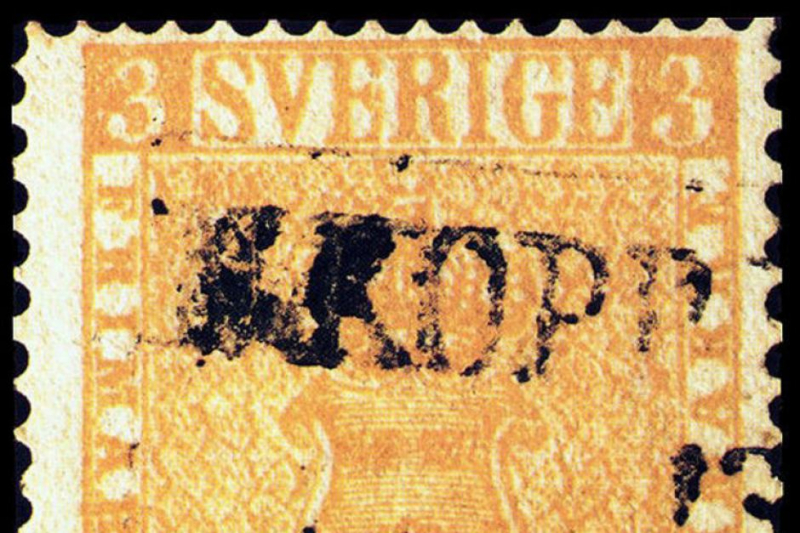
Photo: ABC 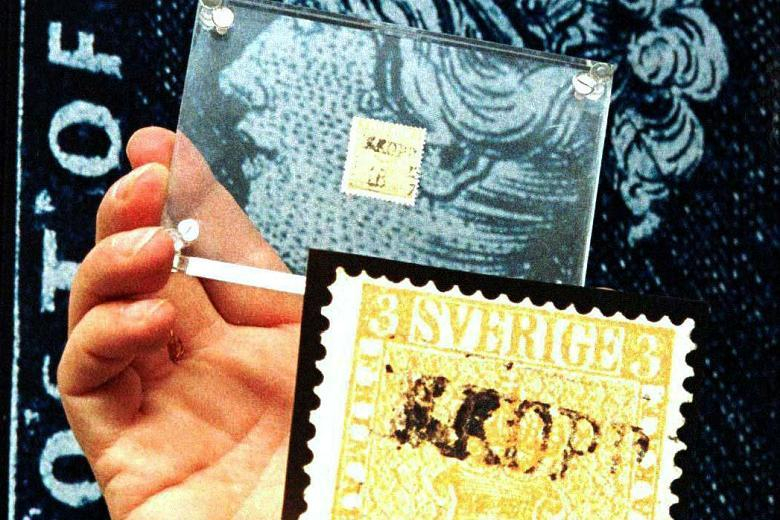
Photo: The Times -
Treskilling Yellow is a three-skilling Swedish stamp that was misprinted in 1855. Only one sample of the "Treskilling" Yellow” (Swedish: Gul tre skilling banco, literally "yellow three skilling banco") is known to exist. On July 13, 1857, this stamp was canceled at Nya Kopparberget (today known as Kopparberg), roughly 150 kilometers (93 miles) from Uppsala.
The stamp was supposed to be green, but due to a printer error, it was printed in yellow, which was the color specified for the eight-skilling stamp. Its exact worth is unclear. It was previously sold for $2.3 million in 1996, but little is known about its current value. The last time it was sold was in 2010. Before the auction, the stamp was estimated to be worth between £1.29 million and £1.73 million by the auction house. The winning bid was not revealed.
Three rare stamps are depicted in the 1963 film “Charade”, one of which is a red Fyrskilling issue. This one, like the real-life Treskilling Yellow, must be a typo because the authentic Fyrskilling stamps were blue, not red, but a misprint of this type is difficult to achieve using standard printing procedures. The stamp was printed in 1854 (one year before Sweden began producing stamps), and the philatelist in the film valued it at $85,000 (adjusted for inflation, this is nearly $700,000 by 2021).
Price: $2.3 million
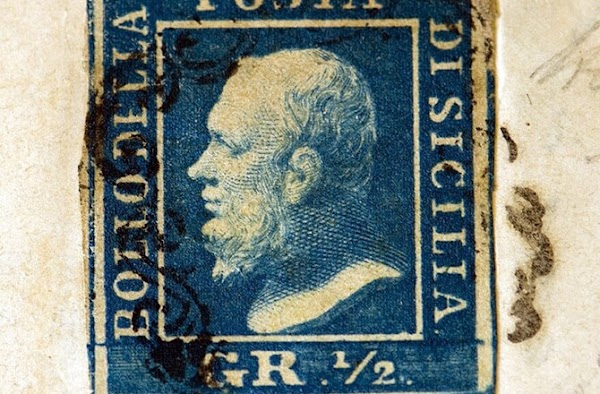
Photo: OpenSea 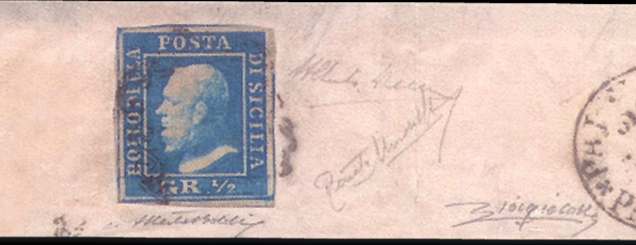
Photo: Galerie Dreyfus -
The British Colony Mauritius produced "Post Office" stamps in September 1847, in two denominations: an orange-red one penny (1d) and a deep blue two pence (2d). Their name stems from the words "Post Office" on the stamps, which was quickly altered to "Post Paid" in the next issue. Only 27 are known to still exist, and they are one of the most famous and sought-after stamps in the world of philately. They are also among the world's most expensive rare postal stamps.
The philatelic world was unaware of the Mauritius "Post Office" stamps until 1864, when Mme. Borchard, the wife of a Bordeaux businessman, discovered reproductions of the one penny and two pence stamps in her husband's correspondence. She sold them to a different collector. The stamps were eventually acquired by the famous collector Philipp von Ferrary through a series of auctions and sold at auction in 1921.
Price: $3.8 million for a pair
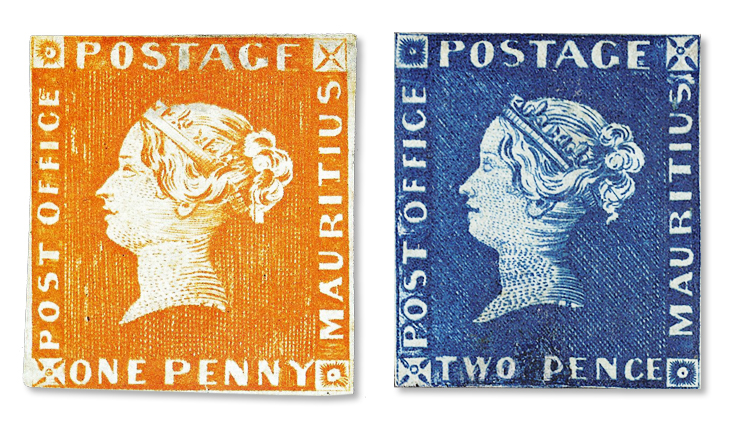
Photo: Oldbid.com 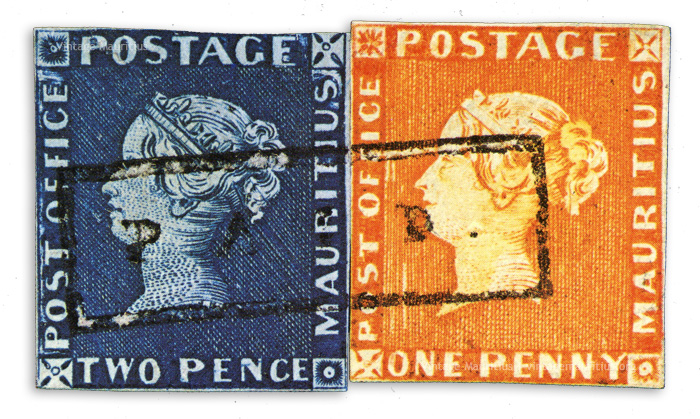
Photo: Vintage Mauritius -
The Whole Country is Red is a Chinese postage stamp that was published on November 24, 1968, but had a design flaw. The stamp depicts a map of China with the phrase "The Whole Country is Red" (Chinese: 全国山河一片红), as well as a worker, farmer, and soldier standing below with copies of Chairman Mao's Quotations, albeit Taiwan is not coloured red. The stamp's face value is 8 RMB.
The stamp was only available for a half-day. Sino Maps Press's editor discovered that the map on the stamp was inaccurate and informed the Ministry of Posts and Telecommunications. As a result, all Chinese post offices were forced to halt the sale of the stamp and return all copies. Only a tiny number of stamps were sold to individual collectors.
In 2009, a huge version of the stamp was auctioned off in Hong Kong for 3.68 million HK dollars (US$474,197), breaking the previous record for the price of a single stamp auctioned off in China. Six standard pieces of the stamp were auctioned off at the same time for a total of 2.93 million HK dollars (US$377,482). A pristine Big Patch of Red stamp sold for 13.8 million yuan ($2 million) in Beijing in late 2018.
Price: $2 million
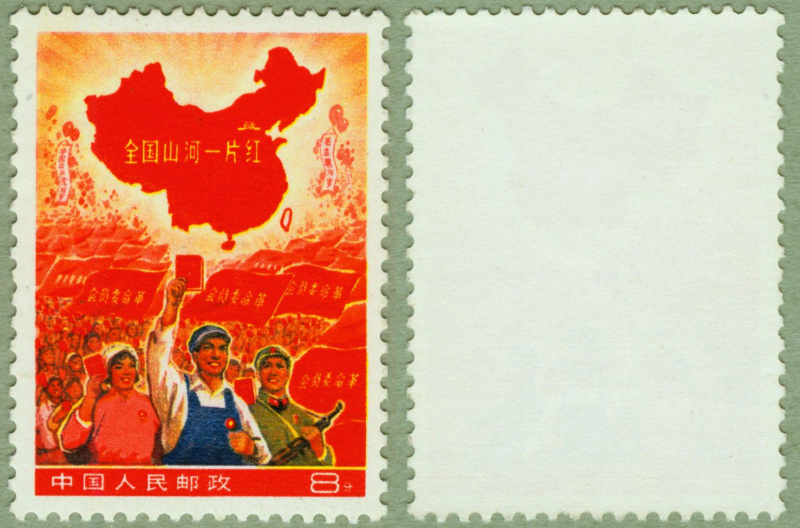
Photo: Pinterest 
Photo: Find Your Stamp's Value -
The Inverted Jenny (also known as an Upside Down Jenny or Jenny Invert) is a 24 cent United States postal stamp that was first released on May 10, 1918, and has an upside-down image of the Curtiss JN-4 airplane in the middle of the design; it is the most famous blunder in American philately. Only one pane of 100 inversion stamps was ever discovered, making this misprint one of philately most expensive rare postage stamps.
Apart from having the biplane printed backwards, the inverted Jenny is well-known for numerous reasons. One of the first buyers of these inverts, Benjamin Kurtz Miller, paid $250 for the stamp. Miller's inverted Jenny, sheet position 18, was stolen in 1977 but found in the early 1980s, albeit the top perforations had been chopped out, making it impossible to identify as the stolen Miller stamp. The stamp was mutilated to appear as if it came from the top row of the sheet, and Klein's numbering on the back was accordingly tampered with to disguise the stamp as position 9—an astute piece of deception based on the knowledge that position 9 had never appeared on the market: in fact, the real position 9 emerged decades later as the locket copy.
An unknown internet bidder paid $1.593 million for the minuscule piece of history, plus an 18% buyer's fee. An excellent Inverted Jenny previously sold for $1.3 million in 2016.
Price: $1.593 million
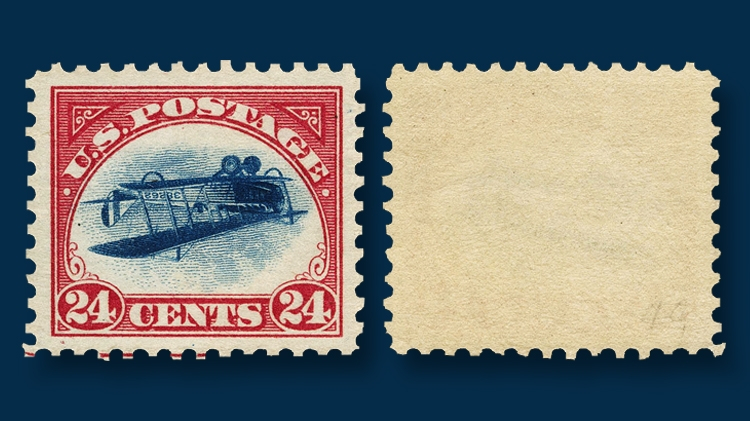
Photo: Linn's Stamp News 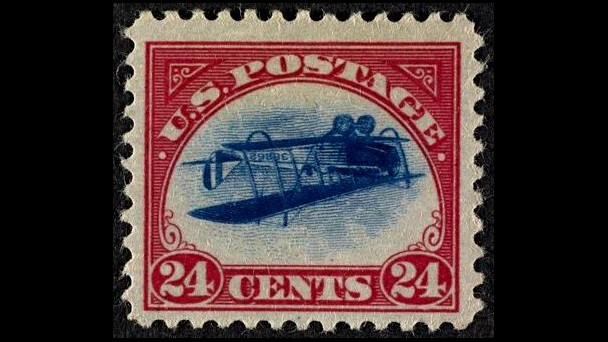
Photo: The British Library -
The Baden 9 Kreuzer Error is a postage stamp error issued in 1851 by Baden, a historical German state. On May 1, 1851, Baden released its first postage stamps. The "9 Kreuzer Green" stamp was a color mistake of the denomination 9 Kreuzer, which was issued in green rather than pink. The green color was supposed to be for the 6 Kreuzer value, however the paper sheets were evidently misaligned. This error has only three canceled copies and one unused copy, but additional sheets of paper may have been printed. The cancellations "4" for Achern, "41" for Ettenheim, and "106" for Orschweier were recorded (today Mahlberg). There are two known examples of letters.
The most common explanation for this inaccuracy is that the printing plate was reversed accidently; nevertheless, this argument cannot be valid because the stamp was only printed once. It's safe to believe that the printer used the wrong plate for the green paper by accident: instead of a "9," he read a "6." It was sold for €1,314,500 ($1.5 million) at auction in 2008.
Price: $1.545 million
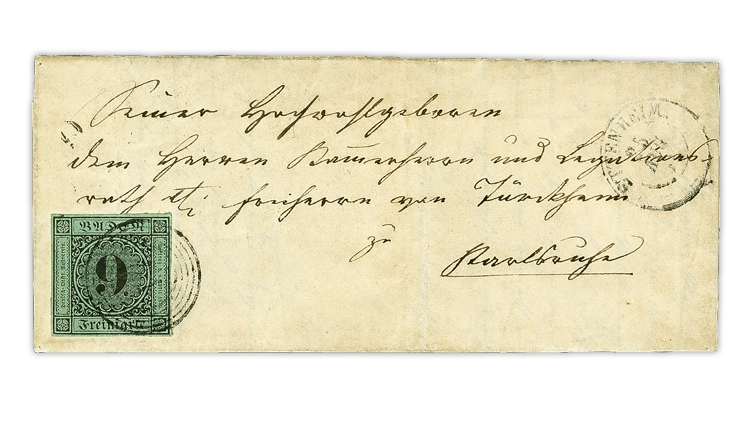
Photo: Linn's Stamp News 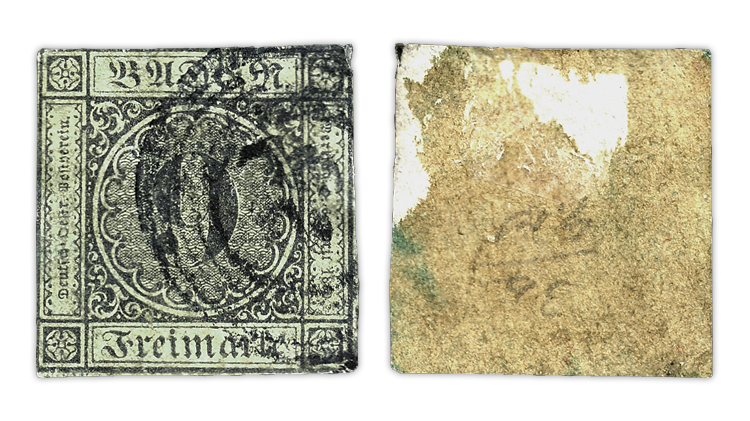
Photo: Linn's Stamp News -
The Two Penny Blue, sometimes known as the Two Pence Blue, was the world's second official postal stamp, issued after the Penny Black in the United Kingdom of Great Britain and Ireland.
The first printing began on May 1, 1840, and 6,460,000 copies were made from two plates until August 29. The stamps were officially valid for postage on May 6th, however they were only accessible on May 8th. On May 6, 1840, it was initially offered to the general public at the London Inland Revenue Office. The design is identical to the penny black except for the denomination, and it was struck from the same die. The 2d blue was supposed to be released at the same time as the 1d black, and the oldest postmark seen on one of these is from May 6, 1840. Plates 1 and 2 were used to produce the initial issues of this value (designed for double rate letters). In 1843, the printing plates were destroyed. Copies of the stamp are now much rarer and more expensive than Penny Black copies.
Two Penny Blue was purchased in 1992 for 1.6 million Swiss Francs ($1.77 million today). For over 20 years, it was the highest sum ever paid for a British Commonwealth stamp.
Price: $1.4 million
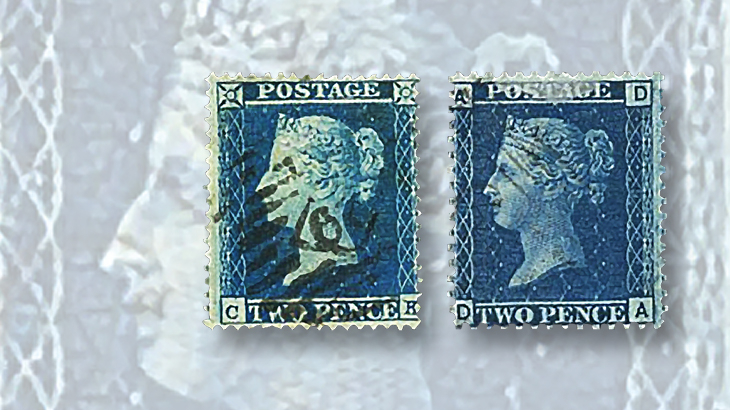
Photo: Linn's Stamp News 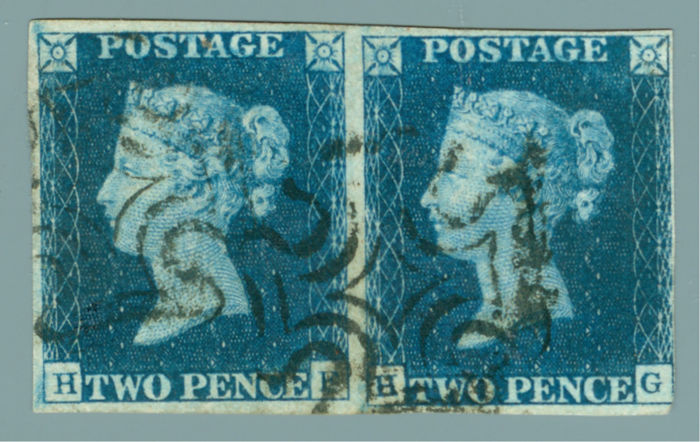
Photo: Catawiki -
This striking stamp celebrates the United States' momentous declaration of independence. Thirteen American colonies engaged in a brutal conflict with Great Britain declared themselves independent states on July 4, 1776. The Declaration of Independence is printed in two colors, green and violet, and is a small masterpiece in its own right. Artist John Smillie created an amazing and incredibly precise replica of John Trumbull's painting of the same name. The 24 cent stamp has a G grill and is available in split, double, or basic gum. A $275,000 sample with an inverted center is now available.
In 2008, a rare, unopened green and violet 24-cent stamp featuring an inverted picture of the signing of the Declaration of Independence sold for $1.2 million, shocking auctioneer Philip Weiss.
Price: $1.2 million
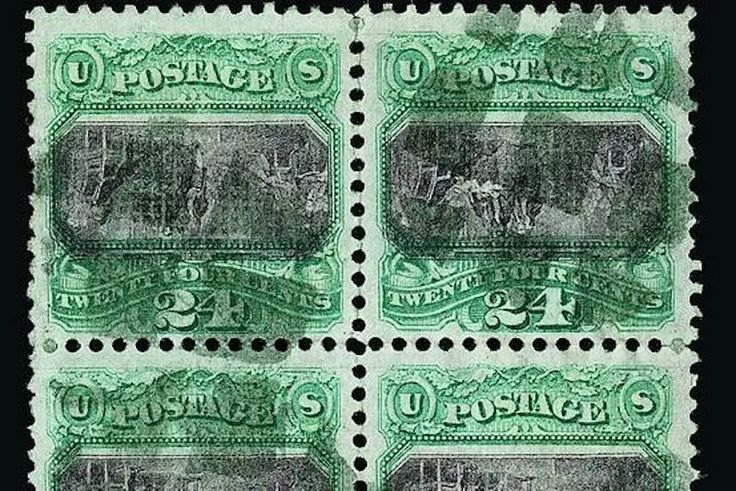
Photo: Pinterest 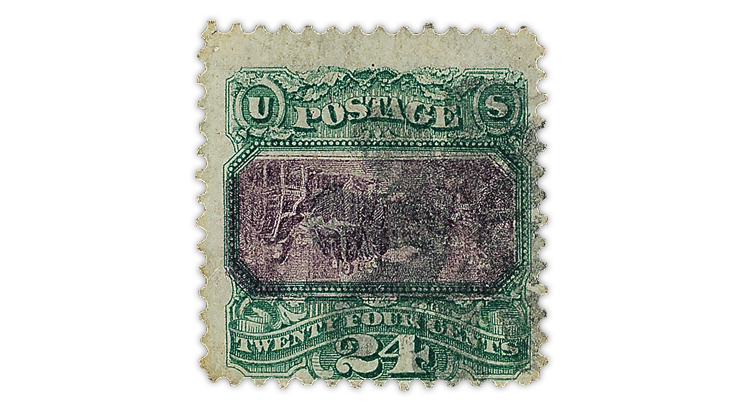
Photo: Linn's Stamp News -
The 1868 George Washington B-Grill is one of the only examples known to philately of the four 3-cent b grill stamps discovered together on cover in 1969. a key to a complete collection of United States postage stamps and one of the rarest stamps in the world.
The real B Grill is distinguished by its size–22 points broad by 18 points high (18 x 15 mm)–and the grill's points-up orientation, which is visible on the back as a pyramidal (male) grill impression. The four known 3c B Grill stamps were discovered in 1969 on a cover addressed from Mason, Texas, to Germany in February 1869. The B Grill was implemented following the 1867 testing period and after the first two months of normal 1868 grill manufacturing, according to the shade and paper. Perhaps the B Grill was born out of the need for a grilling device to replace one of the two devices.
This was sold for more than $1 million in 2008 making it one of the most expensive rare postage stamps.
Price: $1.035 million
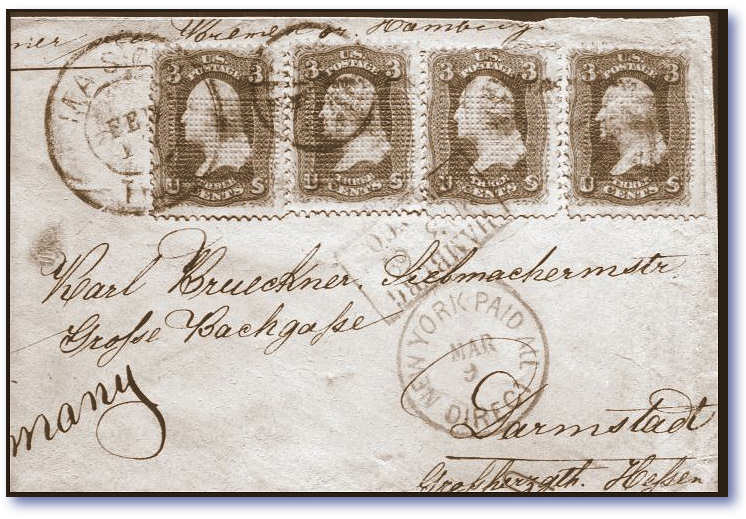
Photo: Glen Stephen Stamps 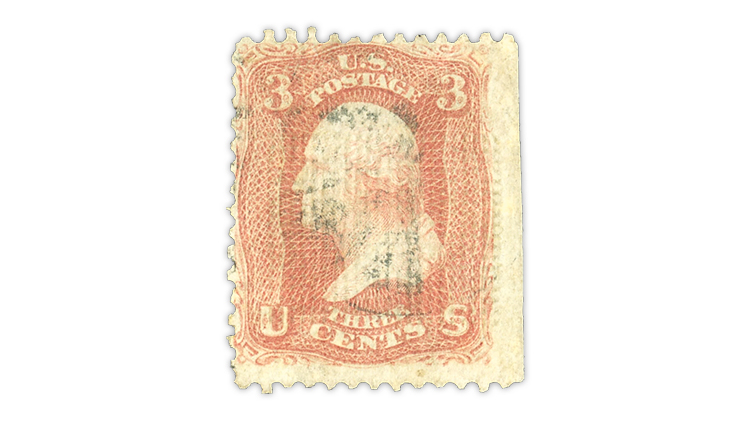
Photo: SMB-sarl.com




















